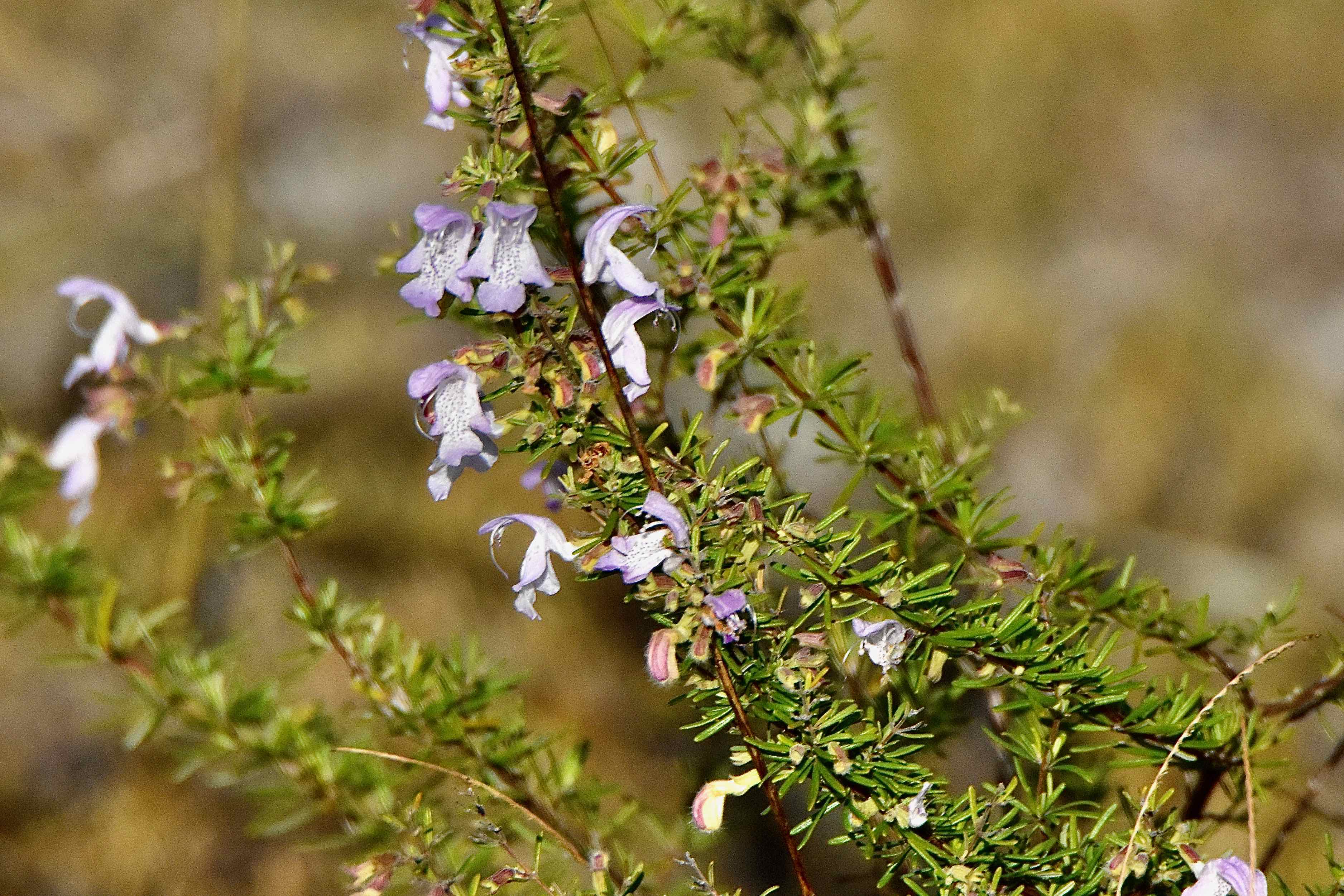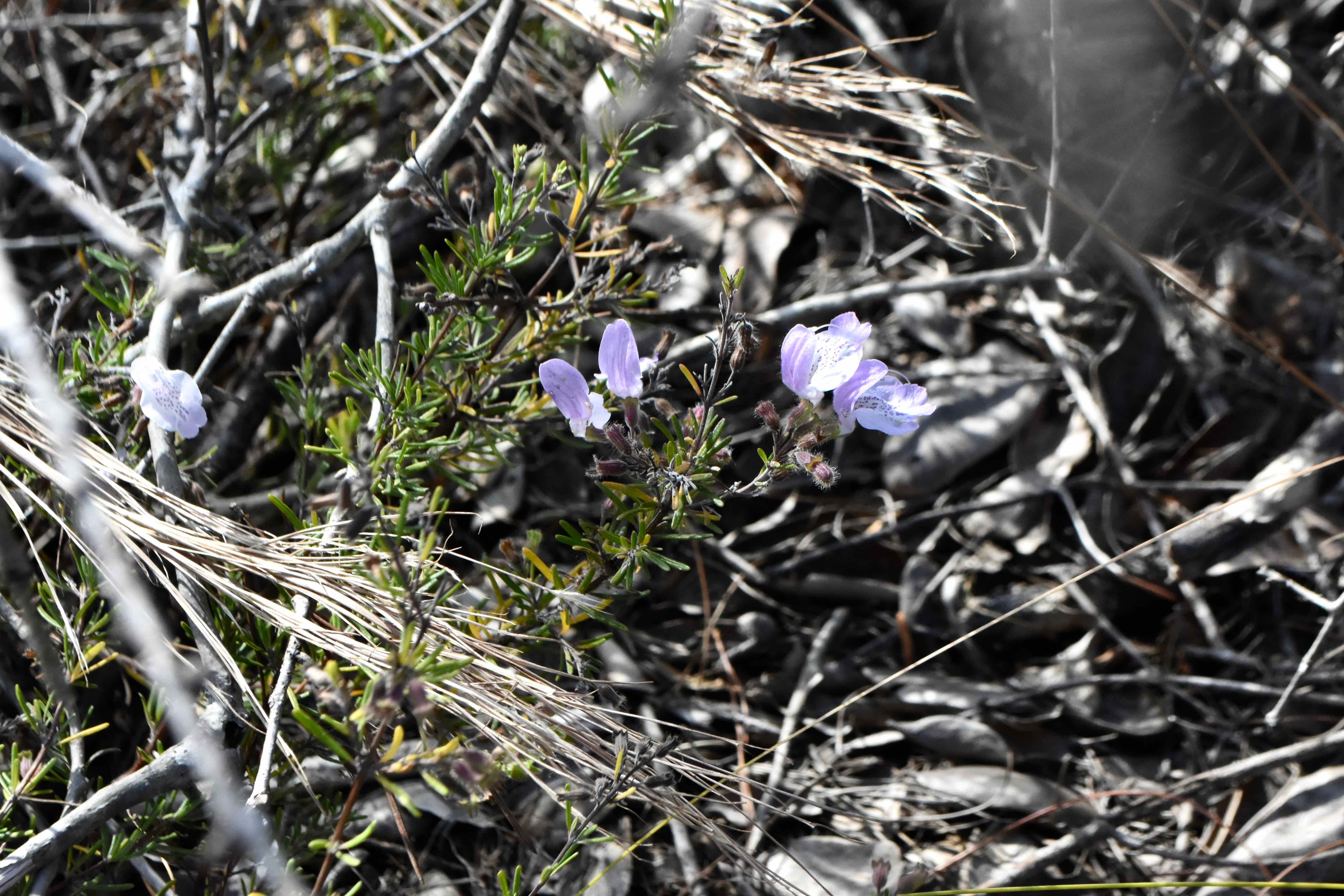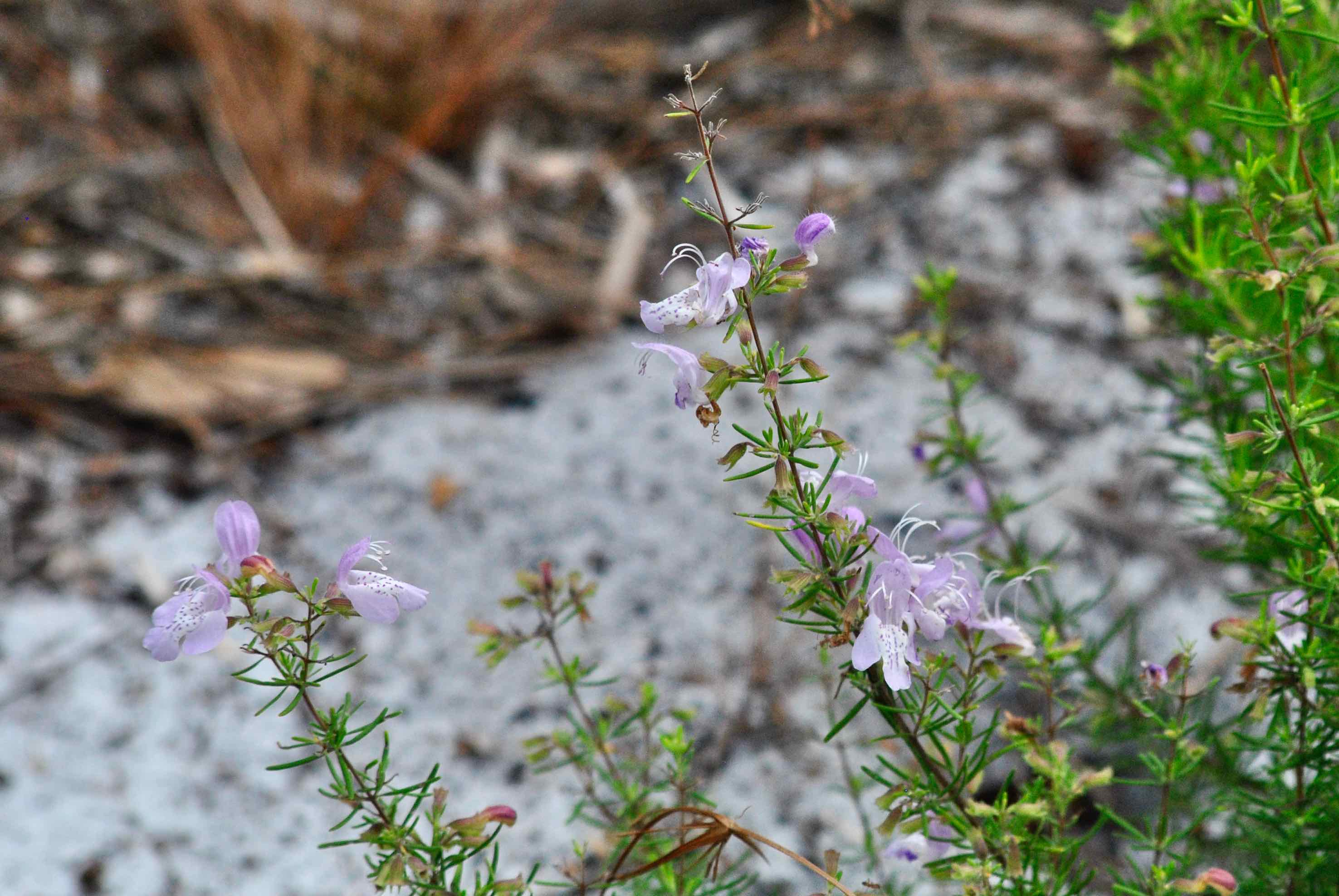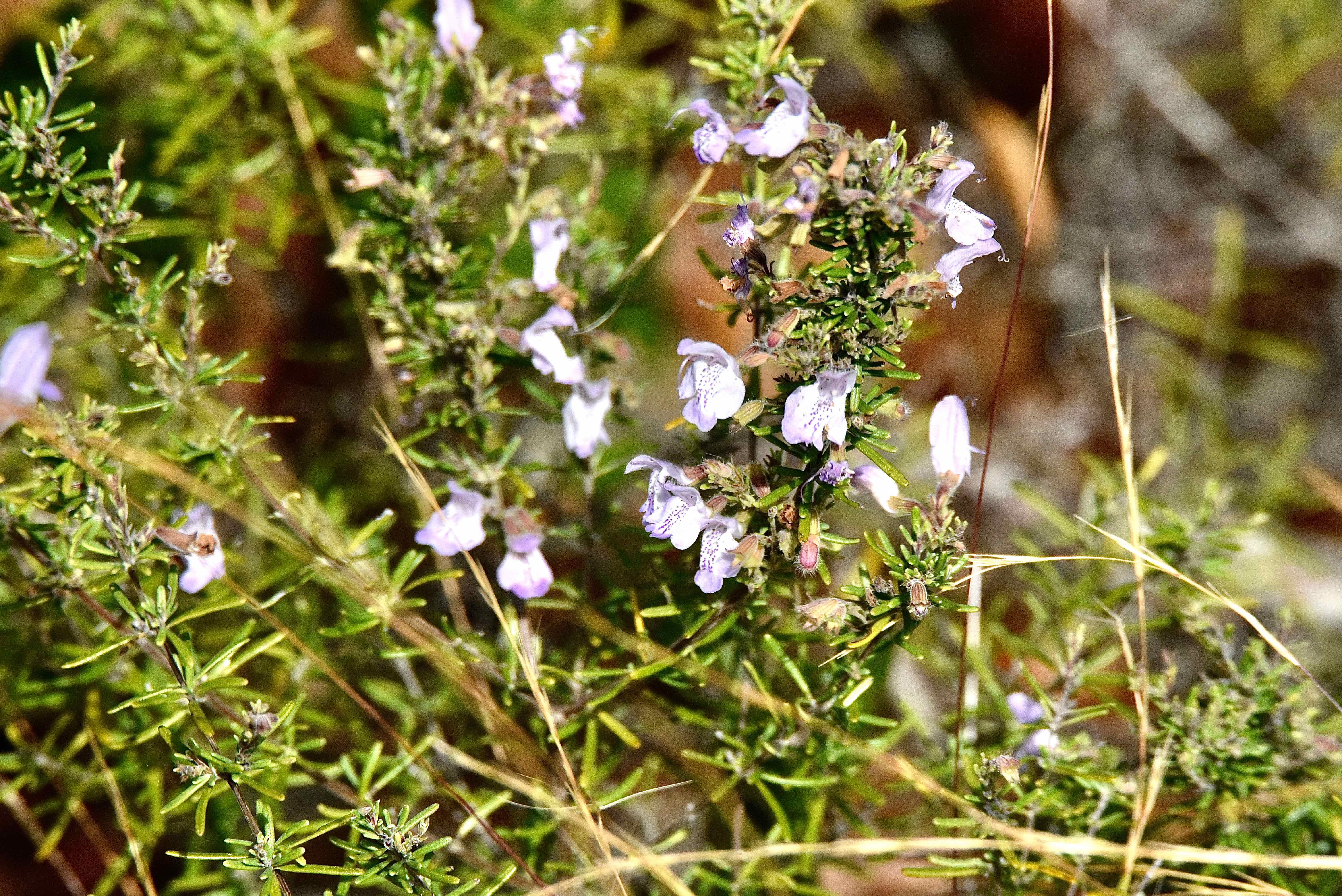
Large-flowered false rosemary, photographed at Jonathan Dickinson State Park, Hobe Sound, Martin County, in January 2019.
Large-flowered false rosemary, Conradina grandiflora, is a member of a family of culinary herbs. Just not the one most obvious given its common name.
Unlikely as it might seem, this is a member of the mint family. On the other hand, with its needle-like leaves, it doesn't take much imagination to figure out how rosemary became part of the name.
Large-flowered false rosemary is a Florida native. In fact, it is found nowhere else on the planet other than the Sunshine State. It can be fairly common in scrubby habitats as far north as Volusia County and south to Miami-Dade. However, experts say it's likely extirpated, or locally extinct, within Miami-Dade.
The problem for large-flowered rosemary is that scrub lands have been and continue to be turned into shopping centers, office parks and housing developments. Scrub has become an endangered habitat, which in turn, threatens the future of the plants and animals, including large-flowered rosemary, that live in scrub. It is considered a shrub, growing to a maximum of about 7 feet, although the plants we've seen are far, far shorter. The plant at the top of the page was less than two feet tall when photographed.
The flowers are slightly violet or blue, have two lips, with series of small, dark spots, or as we like to call them, freckles, on the lower lip. The flowers appear year-round. The fruit is small and nut-like. The leaves are aromatic and needle-like, about an inch to an inch-and-a-half long narrow, with small black dots. The undersides are covered in fine hairs that can have a white or gray cast.
Large-flowered false rosemary likes deep, sandy soil typical of Florida's ancient coastal dunes — places like Seacrest Scrub Natural Area in Boynton Beach. It grows in full sun and can tolerate drought when fully established.
There five members of the Conradina genus, or scrub mints, in the southeastern United States, all but one of which is either rare or of limited range. As you might think, given the name, large-flowered rosemary has the largest flower of the group. It's also the only member of the genus found in South Florida.
Florida formerly listed the plant as endangered but has upped its status a notch to threatened, but it's still considered at risk of extinction because of habitat loss. The state has no management plan for large-flowered false rosemary but it does offer interested landowners incentives to conserve endangered and threatened plants. The Institute for Regional Conservation considers it rare in South Florida, and NatureServe rates it as vulnerable. It is not listed federally under the Endangered Species Act.
Large-flowered rosemary is cultivated, used in natural landscapes, restorations and wildflower gardens. It is not grown by commercial nurseries to our knowledge.
Other common names include scrub mint. The scientific name for the mint family is Lamiaceae.
Click on photo for larger image
U.S. Department of Agriculture Distribution Maps
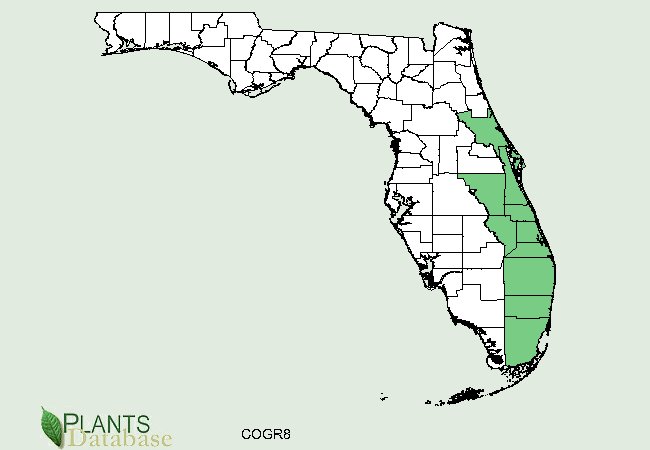

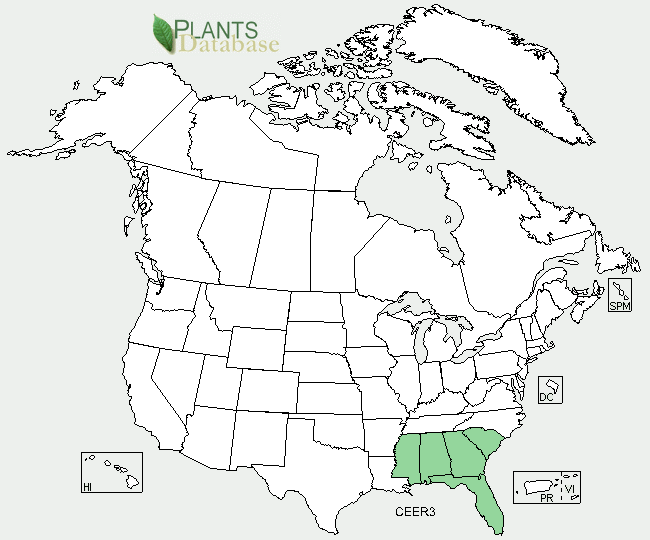
Links for Large-Flowered Rosemary

